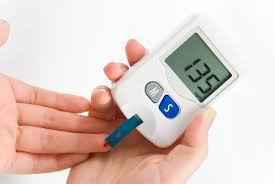
Diabetes, according to the World Health Organisation, affected 422 million people in 2014. That is more than 4 times more than 36 years ago, when it affected 108 million people globally.
In America, diabetes is currently the 7th leading cause of death. In South Africa, it is estimated that 7% of adults have diabetes. And its growing – as we are a rapidly urbanising country, with greater access to high calorie foods, more sedentary lifestyles, etc.
It was with interest then, that I came across the American College of Physicians updated guidelines for the management of diabetes. The reason for the update is due to the number of new oral therapies approved for use by the FDA. The College, therefore, needed to present the most up to date guideline which deals with all classes of approved drugs.
The new guidelines recommend metformin as first-line treatment of type 2 diabetes. A sulfonylurea, thiazolidinedione, SGLT-2 inhibitor, or DPP-4 inhibitor as add-on to metformin is recommended as second-line treatment.
Let’s bring this more local – and explore the most recent guidelines for South Africa, published by the Society for Endocrinology, Metabolism and Diabetes of South Africa (SEMDSA) – the 2012 guidelines.
These guidelines also regard Metformin is first line therapy, while Sulphonylureas, Alpha glucosidase inhibitors, DPP4 inhibitors and GLP-1 agonists all have a place as add-on therapy. Thiazolidendiones don’t long like they have a role to play as Pioglitazone has been removed from the 2012 treatment Algorithm and Rosiglitazone is no longer available in South Africa. There is currently no recommendations for SGLT-2 inhibitors.
Metformin still is a first line drug of choice for me, as it is effective and affordable. The major contra-indication for metformin use will be in patients with severe renal dysfunction (eGFR < 30). However, SEMDSA will need to publish an update soon, as there are more options available for treatment in South Africa.
Another favourite diabetic treatment has to be Liraglutide (Victoza) – probably because of its effect on weight loss. Most of my diabetic patients are overweight, and Liraglutide would be started a lot earlier in these patients – if they could afford it. It’s such a pity that a medication that could have such a profound effect on diabetes and weight management be put out of reach of the many patients that would benefit from it.
There has been a study published recently claiming that Liraglutide decreases the incidence of diabetes by 80% when used in overweight individuals, however, I wonder if the reduction in diabetes is directly attributable to Liraglutide, or could it be as a positive side effect of weight loss. It would be best to study Liraglutide, versus other conventional forms of weight loss, to truly determine if the reduction is due to Liraglutide.
So while Metformin represents an effective and affordable first line choice for diabetes, Victoza remains out of reach for the average patient. Let’s hope that Novo Nordisk recoups their R&D costs, so that the price can be made more affordable for the man on the street.
Read some of my previous articles on Diabetes and Liraglutide here (Diabetes – why is it so difficult to manage?, Liraglutide assists with weight loss in non-diabetic patients.). Please feel free to comment or share this if you feel that it may benefit others.
Dr Essack Mitha
POST BLOG NOTE: SEMDA has indeed published their new guidelines – in fact, i believe it was published today. See the SEMDA 2017 guidelines here. The guidelines estimated the South African national prevalence of diabetes (based on HbA1c) in persons older than 15 years was 9.5% in 2012, which is higher than previously estimated. The guideines are quite comprehensive and gives details into what equipment a diabetic centre should have, what assessments should be done, and the time interval for these assessments to be repeated. Sulphonyureas, Pioglitozone and DPP4 inhibitors are recommended as add-on therapy with Metformin. SGLT2 inhibitors are recommended as 2nd line or 3rd line agents, while GLP1 agonists are described as 3rd agents.
I like these guidelines, and will spend the next few days going through it in detail.






